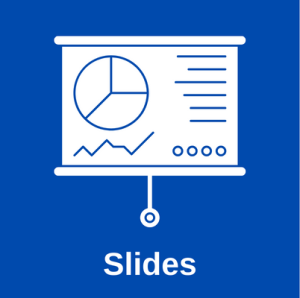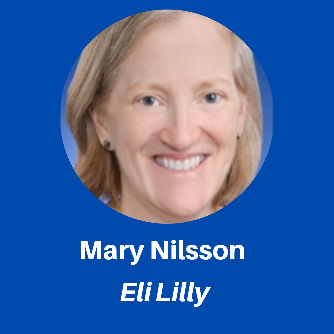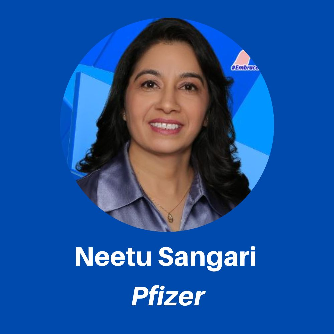| Reimagining a Safety Submission – Vision of Interactive Safety Reviews |
|---|
The focus of this Community Forum was the various efforts related to interactive safety reviews. The presentation was followed by a discussion on the end goal, potential impact on submissions, and different models for creating and sharing interactive safety review tools. This Community Forum took place over Zoom on 27 March 2023. Join the conversation by posting your comments and questions on the Disqus Forum below. |
TENATIVE AGENDA: | |
|---|---|
| Topic | Presenter(s) |
| Welcome | Greg Ball & Mary Nilsson, Safety Analytics Working Group Leads |
| Interactive Safety Review – Some Thoughts on the Vision | Mary Nilsson & Wei Wang Eli Lilly |
| PHUSE Interactive Data Visualisations for Submissions project team | Xiangyun Wang, Genentech & Raj Kiran, Takeda |
| PHUSE Interactive Forest/Volcano Plot | Melvin Munsaka, Abbvie & Neetu Sangari, Pfizer |
| DIA-ASA Interdisciplinary Safety Evaluation (DAISE) Working Group: Interactive Safety Graphics project team | Jeremy Wildfire, Gilead |
| Accumulus Synergy | Khushboo Sharma & Bill Gibson, Accumulus |
| Discussion | |
| Presenter | Bio |
|---|---|
Greg Ball, ASAPprocessGreg Ball served in the Navy and taught High School maths and physics before earning his master’s in statistics from Purdue and his PhD in Biostatistics from the University of Texas. His research on blinded safety monitoring procedures is being developed in collaboration with statistical and clinical scientists at several pharmaceutical companies (including AbbVie and Merck). With Mary Nilsson, Greg co-leads the PHUSE Safety Analytics Working Group. Greg established, with Bill Wang, the ASA Biopharm Safety Monitoring working group and has been pioneering the joint DIA-ASA Interdisciplinary Safety Evaluation (DAISE) scientific working group, to advocate for aggregate safety assessments and cross-disciplinary scientific engagement. | |
Mary Nilsson, Eli LillyMary Nilsson is Executive Director-Statistics, Safety Analytics at Eli Lilly. Mary received her master’s degree in statistics from Iowa State University in 1989 and has been employed at Eli Lilly since then. She is currently a researcher in the Safety Analytics group. Mary consults with molecule teams on safety analysis planning for Phase II to III studies and integrated submission documents. Her primary interests include analyses of adverse event data, analyses of laboratory data, statistical analysis plans, and collection and analysis of suicide-related events. Additionally, she co-leads the PHUSE Safety Analytics Working Group, creating cross-functional education and cross-industry recommendations for standard safety analyses and displays. | |
Wei Wang, Eli LillyWei Wang is an active member of the PHUSE Safety Analytics Working Group. She was the lead author of the recent white paper on Analyses and Displays Associated with Laboratory Analyte Measurements. She was also a co-author of several other white papers from the Safety Analytics Working Group. Wei has been working in the pharmaceutical industry for 23 years and has led various initiatives in the safety analytics area at Eli Lilly. She has a special interest in visual analytics and has developed numerous interactive review tools for safety review and display purposes. She is the lead author for the paper on Clinical Trial Drug Safety Assessment with Interactive Visual Analytics. Statistics in Biopharmaceutical Research, 1–12 (2020) and the paper on Interactive Visualisation for Clinical Safety Data Review. Biopharmaceutical Report, 27(Fall 2019/Winter 2020). | |
Xiangyun Wang, GenentechXiangyun is a Senior Principal Data Scientist in Genentech. She has been working in several therapeutic areas with various responsibilities since 2000. Additionally, Xiangyun has participated in initiatives within Roche/Genentech such as Spotfire for clinical data analysis, collaboration with scientists in safety and Patient Centered Outcomes Research group respectively, and part of Statistical Programming Data Analytics pilot group. Xiangyun is passionate about interactive analysis for clinical data for decision-making and is currently co-leading a PHUSE project on “Interactive Data Visualisations for Submissions”. | |
Raj Kiran, TakedaRaj Boddu honed his skills at IQVIA, BMS and Vertex before joining Takeda in 2017 as a statistical programmer in SQS. There, he applied his SAS programming skills and experience in clinical/oncology/CF study-related SDTM and ADaM mapping, programming, testing and documentation. He later pivoted into a different role within SQS, where he worked with leadership to create key operational metrics and optimise processes. Raj then transferred to Alta Petens, where he is a product manager for clinical common data model and statistical computing environment workstreams in systems and architecture. In his current position, Raj is dedicated to driving clinical data forward with strategic solutions and innovative products. He brings a unique combination of expertise in both product management and clinical data, which enables him to tackle complex challenges and deliver impactful outcomes in the life sciences industry. Raj’s primary focus is on shaping the future of clinical trials through data-driven decision-making and the development of cutting-edge products. He is passionate about innovation and committed to driving progress, to make a difference in the field of clinical data. | |
Melvin Munsaka, AbbVieMelvin Munsaka is Senior Director and Head of Safety Statistics at AbbVie. He received his PhD from Queen’s University in Canada and his MSc and MEd from McGill University in Canada. Melvin has more than 25 years of industry experience working in various capacities including strategic leadership roles. He has participated in multiple global regulatory submissions covering a wide range of therapeutic areas. Melvin is an active member of the ASA Biopharm Safety Scientific Working Group, the DIA Bayesian Scientific Working Group’s Safety and Reporting and Tools subteams, and the PHUSE Safety Analytics, Data Visualization, and Open-Source Technology Working Groups. | |
Neetu Sangari, PfizerNeetu Sangari is passionate about contributing to drug development using advanced innovative methods for patients that will have a meaningful impact on their lives. She currently leads Statistics Data Science and Analytics (Director) at Pfizer and works with cross-functional partners – programming, statisticians, clinicians and digital teams. Neetu established a strategy for using multiple programming software in the clinical area and assisted in the decision-making for the Best Fit analytical tool. She has led multiple projects and accomplished identifying innovative solutions to ambiguous/complex problems using agile data analytics. She has delivered multiple presentations at industry conferences and academic symposiums. Neetu gained her PhD in Computer Science, with a concentration in big data analytics. Externally, she co-leads the PHUSE Interactive Plots Working Group project, in collaboration with FDA and ASA members. Neetu also contributes to the mentoring circle and Regional Liaison of the Tri-State NY/NJ/CT region in Tomorrow’s Executives Affinity Group within the Healthcare Businesswomen’s Association. At Pfizer, she leads the Summer Growth Experience Internship Programme for university students. Neetu’s interests include the use of AI/ML in healthcare and continuing to transform pharma using big data analytics-based innovation. | |
Jeremy Wildfire, GileadJeremy Wildfire is a data scientist at Gilead and is focused on creating modern tools that improve the analysis pipeline for clinical trials. Jeremy has served as the technical lead for the Interactive Safety Graphics (ISG) subteam of the ASA Biopharm-DIA Safety Working Group since 2018. The working group is an interdisciplinary effort that seeks to provide a clinical safety workflow for monitoring during clinical development in an open-source model. The ISG team created a workflow to monitor hepatoxicity using the safety Graphics R package and a well-documented clinical workflow based on the safety clinician’s monitoring practice. The working group has recently expanded its focus to include additional safety domains including adverse events, QT and nephrotoxicity. | |
Khushboo Sharma, AccumulusKhushboo Sharma serves as the Chief Regulatory Innovation Officer at Accumulus. Prior to Accumulus, she was Chief of Staff and Senior Vice President at BIO, where she oversaw the Science and Regulatory team, which largely focuses on major regulatory policy initiatives spanning preclinical to post-market activities. Through her work at BIO, Khushboo was at the forefront of identifying challenges and offering concrete solutions and suggestions to help build the appropriate regulatory framework. Khushboo joined BIO in 2021 after spending 11 years in various roles at the FDA, including Deputy Director of Operations in the Office of New Drugs (OND), where she oversaw business, regulatory and programmatic operations, supported regulatory review for the New Drugs Regulatory Program through the New Drugs Modernization effort, and served as an FDA negotiator during the most recent Prescription Drug User Fee Act (PDUFA) negotiations. Khushboo was named one of In Vivo’s 2021 Rising 30 Leaders in Healthcare and Science. Khushboo also worked as a scientist for four years at Janssen Pharmaceuticals, managing oncology and therapeutic monoclonal antibody drug products and supporting development in Phase I to Phase III clinical studies. | |
Bill Gibson, AccumulusWith a tremendous amount of experience in the healthtech/drug development life cycle space, Bill Gibson serves as VP of Product for Accumulus Synergy, where he brings more than three decades of product management and software development leadership experience and expertise. He is also the co-founder of multiple software start-ups. Prior to joining Accumulus Synergy, Bill held various roles within the product and strategy space at IQVIA, where he focused on decentralised clinical trials and the broader digitalisation of clinical trial operation. Bill is also the former lead for life science product management at SAS. |












